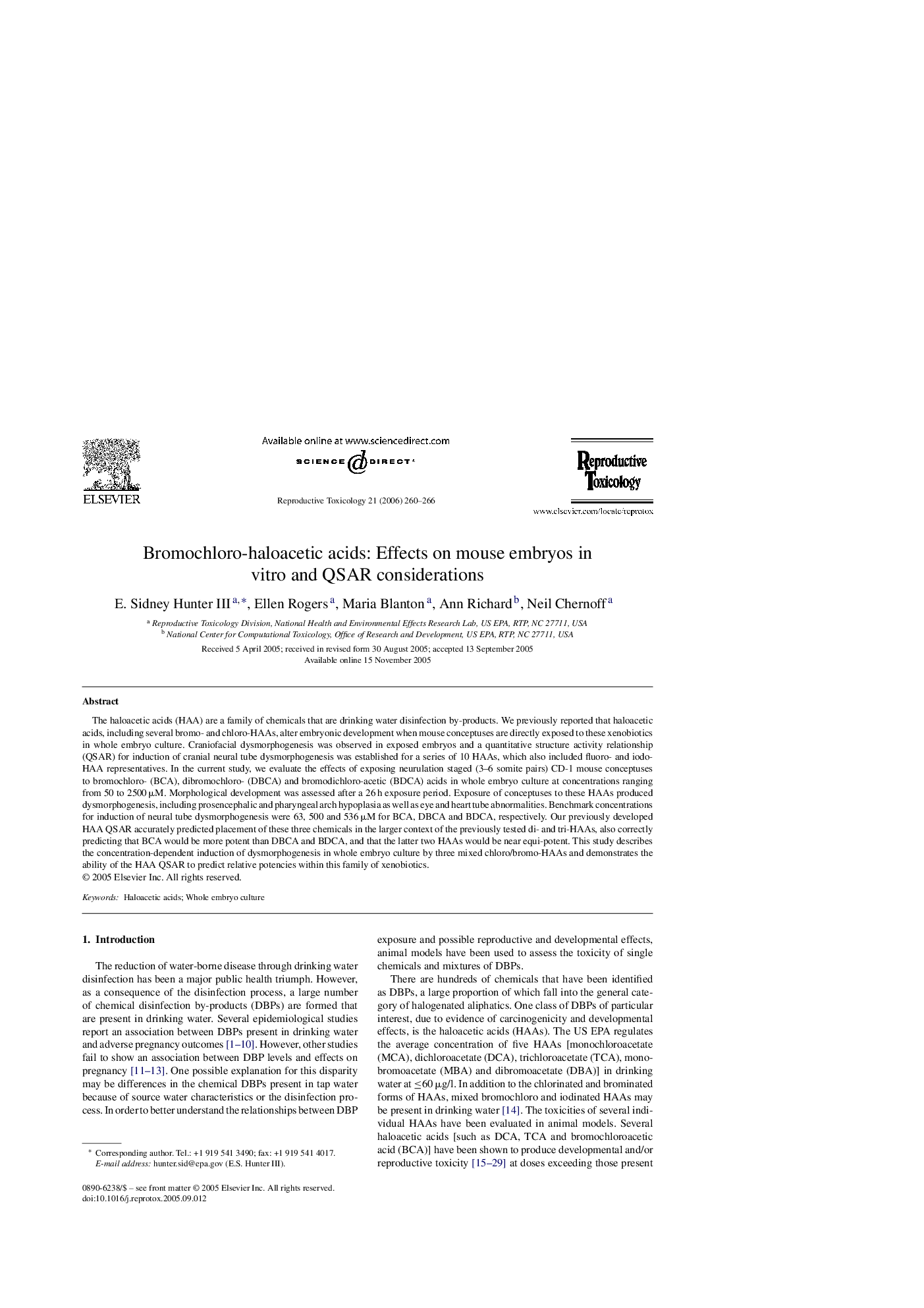| کد مقاله | کد نشریه | سال انتشار | مقاله انگلیسی | نسخه تمام متن |
|---|---|---|---|---|
| 2595377 | 1132320 | 2006 | 7 صفحه PDF | دانلود رایگان |

The haloacetic acids (HAA) are a family of chemicals that are drinking water disinfection by-products. We previously reported that haloacetic acids, including several bromo- and chloro-HAAs, alter embryonic development when mouse conceptuses are directly exposed to these xenobiotics in whole embryo culture. Craniofacial dysmorphogenesis was observed in exposed embryos and a quantitative structure activity relationship (QSAR) for induction of cranial neural tube dysmorphogenesis was established for a series of 10 HAAs, which also included fluoro- and iodo-HAA representatives. In the current study, we evaluate the effects of exposing neurulation staged (3–6 somite pairs) CD-1 mouse conceptuses to bromochloro- (BCA), dibromochloro- (DBCA) and bromodichloro-acetic (BDCA) acids in whole embryo culture at concentrations ranging from 50 to 2500 μM. Morphological development was assessed after a 26 h exposure period. Exposure of conceptuses to these HAAs produced dysmorphogenesis, including prosencephalic and pharyngeal arch hypoplasia as well as eye and heart tube abnormalities. Benchmark concentrations for induction of neural tube dysmorphogenesis were 63, 500 and 536 μM for BCA, DBCA and BDCA, respectively. Our previously developed HAA QSAR accurately predicted placement of these three chemicals in the larger context of the previously tested di- and tri-HAAs, also correctly predicting that BCA would be more potent than DBCA and BDCA, and that the latter two HAAs would be near equi-potent. This study describes the concentration-dependent induction of dysmorphogenesis in whole embryo culture by three mixed chloro/bromo-HAAs and demonstrates the ability of the HAA QSAR to predict relative potencies within this family of xenobiotics.
Journal: Reproductive Toxicology - Volume 21, Issue 3, April 2006, Pages 260–266